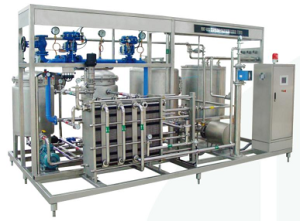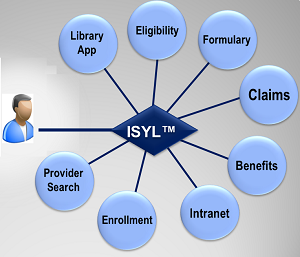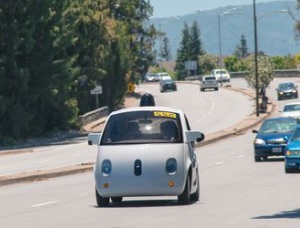22 Aug Unlocking the Power of Unruly Systems

Rules are the basis of all good decisions. Humans learn learn them through observation and nurture. Can systems do the same thing – can they learn through observation and nurture? I propose that they can. At it’s simplest, a rule takes the form of a premise (“IF clause”) and conclusion (“THEN clause”) and can be stated in natural language, or mathematical or logical notation. As an example:
Premise: IF you exceed the posted speed limit…
Conclusion: THEN you may be subject to a traffic citation!
Most rules in the real world are more complex, embodying one or more premises and one or more conclusions. The rule above may be augmented by adding a second conclusion using a conjunction (logical “AND” clause) such as “AND you increase the risk of a collision.” For systems, as well as humans, the rules are necessary but not sufficient. All rule interpreters benefit significantly by adding context. If the system does not know that traffic citations and collisions are undesirable, the system (such as an autonomous vehicle) may erroneously interpret the rule by accelerating beyond the posted limit in order to get a citation or cause a collision. Context in rule-based systems is often described as constraints.
| Understanding Context Cross-Reference |
|---|
| Click on these Links to other posts and glossary/bibliography references |
|
|
|
| Prior Post | Next Post |
| Context of Knowing Thinking and Believing | Methodology or Mythology |
| Definitions | References |
| context learning | Chisholm – 2004 Ron Ross – July 2013 |
| decision constraints | Laguna – 2004 Fiammante 2010 |
| rules | Kant – 1781: Critique of Pure Reason |
Back to School to Learn the Rules
As I suggest in another post on Context in Backward-Chaining Logic, rules are a logical part of a system that seeks, in any way, to model for human brain functions. Our faculties of reasoning and judgement are guided by learned rules such as: “Don’t touch very hot things or you will hurt yourself.” I propose that the combination of good data and good rules has the power to transform information into knowledge.
| Information | Knowledge | Rules |
|---|---|---|
| logically connected or associated data elements | analyzed information with supportable conclusions | actions to information to knowledge |
The Business Rules Group has created a manifesto on how rules encoded in systems can make business applications and services smarter. Quoting from the Manifesto: “An effective system can be based on a small number of rules. Additional, more discriminating rules can be subsequently added, so that over time the system becomes smarter.” Applying rules to a system can make it smarter. Starting small helps prove the model and retain the knowledge. Incrementally adding rules is an economical approach to automating business functions and can facilitate establishing a solid base of rules and a solid base of knowledge. Systems that support incremental addition of business rules are agile, making them more adaptable to changes in external conditions, and imparting agility to the process owners.
The specific capabilities the system is designed to provide will govern the ordering, prioritization and flexibility of the rules. Consider, for instance, autonomous land vehicles or self-driving cars. In the context of avoiding unexpected traffic hazards such as deer, ducks and grandmas in wheel chairs, Google found that general rules often serve the broadest range of situations: “Google says it teaches its cars how to handle the more fundamental aspects of unpredictable road behavior instead of implementing specific directions for particular cases, like how to deal with a duck-chasing wheelchair rider. That way, the car gets practice in broader range of situations. Most of the time, however, the best solution is to just slow down, Google says (Statt 2015).
Rules in Artificial Intelligence
Can intelligently applied rules unlock the potential of your automated systems? I think the answer is “YES!” Ron Ross recently published an article on how smart rules, sometimes even not very many smart rules, can make smarter systems:
 “Smart architecture based on business rules is unsurpassed for incremental design, where improvement:
“Smart architecture based on business rules is unsurpassed for incremental design, where improvement:
- Focuses on real business know-how, not just better GUIs or dialogs.
- Continues vigorously after deployment, not just during development.
- Occurs at a natural business pace, not constrained to software release cycles.” [Ron Ross, July 2013]
My post on Context in Backward-Chaining Logic shows how context supports rules and the application of rules and supply context. Actionable intelligence, in both a cognitive sense and a business sense, is derived from this interplay of context and rules when the system design effectively uses information to drive the rules and processes. Please indulge me as I describe systems I built to use rules to make a system smarter.
 Full-San Guardian: Monarch Division, H.B. Fuller
Full-San Guardian: Monarch Division, H.B. Fuller
The Secretary of health and Human Services championed a troubleshooting approach for food and beverage manufacturing called Hazard Analysis and Critical Control Points (HACCP). Monarch sold cleaning chemicals and systems to dairies and other food manufacturers, and wanted to add value by helping troubleshoot when quality problems occur. They brought me in to design and build the system that, in conjunction with a Laboratory Information Management system, enabled plant personnel to rapidly and visually define critical control points, identify the risks (microbiological, metallic, chemical…) that could introduce contamination at each point, and the control mechanisms for managing and troubleshooting the process through those points. This is another example of a visual system in which the forward chaining rules did some heavy-lifting or complex analyses and the visual component enabled human experts to more effectively apply their knowledge of the rules to deliver better outcomes faster. When the division was acquired by a competitor, one of the reasons cited was to obtain the software.
I Speak Your Language (ISYL™)
 ISYL™ is different from the two systems above in that there is no visual component, and all the expert knowledge is encoded in rules, so users without detailed training in the complex domain can effectively deliver correct answers. One domain in which the software is operating is in Health Insurance supporting phone support for questions on benefits and claims.Part of the problem is that the domain is very complex with multiple disparate systems needed to answer questions depending on the details. Adaptors to multiple databases and systems and documents help eliminate the need for users to juggle logins. Workflows that manage the dialog to get needed clarification on the specifics of the question help ensure that the constraints are fully understood before attempting to apply the rules. Then the rules are used to formulate the searches and queries and deliver precision content to answer questions.
ISYL™ is different from the two systems above in that there is no visual component, and all the expert knowledge is encoded in rules, so users without detailed training in the complex domain can effectively deliver correct answers. One domain in which the software is operating is in Health Insurance supporting phone support for questions on benefits and claims.Part of the problem is that the domain is very complex with multiple disparate systems needed to answer questions depending on the details. Adaptors to multiple databases and systems and documents help eliminate the need for users to juggle logins. Workflows that manage the dialog to get needed clarification on the specifics of the question help ensure that the constraints are fully understood before attempting to apply the rules. Then the rules are used to formulate the searches and queries and deliver precision content to answer questions.
Another problem in this domain is that there are not enough experts around to answer questions, thus, relatively inexperienced or “naive” users are expected to behave as if they have wide-ranging knowledge of the systems and the domain, and then deliver correct answers. Prior to installation of the system, users required several weeks of training and the average error rate was unacceptably high. With ISYL™ workflow, rules and dialog system guiding the users through the process, training was reduced 200% (along with training costs and supervisor costs) and the error rate was reduced over 90% (reducing attrition and costly appeals).
Smart systems with rules can bring significant business value and bring us closer to the promise of computers, enabling knowledge workers to do more, better and faster. I’ll share more about the model later, describing how dialog, workflow and rules work with ontological knowledge to provide major increases in the value automated systems deliver to businesses and consumers.
| Click below to look in each Understanding Context section |
|---|









